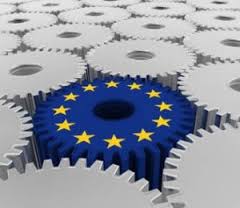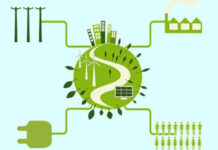
What does the reform of the energy market promoted by the EESC actually envisage?
The reform of the electricity market envisaged by the EESC ensures that the following preconditions are met: an environmentally-friendly, affordable and reliable supply of energy and the right to energy. Consumers (end users) will also play a central role in that electricity market, including in their role as small producers (prosumers). In addition, we are convinced that a fully liberalized market will not achieve this, because the shareholder interest will always prevail over the general interest. That is why we advocate a hybrid market: liberalized where possible, government regulation where necessary.
What do you think are the factors that most hinder this reform?
Clearly the electricity market is in the middle of a paradigm shift. We are moving from a market dominated by a few large fossil energy companies to a market dominated by renewable energy generated by large energy companies (particularly offshore wind) on the one hand and on the other hand numerous smaller producers who produce solar and wind energy for their own use. But also enter the grid. And as with any paradigm shift, there are two dominant factors working against the shift: the vested interests and the fear of change. The vested interests manifest themselves, for example, in the battle for subsidies for fossil energy. While it is abundantly clear that the use of these money flows to the renewable energy sector is financially, economically and socially much more profitable, the fossil world strongly resists losing these privileges. In addition, they also respond to the fear of change by, for example, threatening: the lights will go out soon!
The EESC’s request is for an energy market that is even more decentralised, which is also possible thanks to the massive use of renewables, but there remains an aspect linked to the network infrastructures which could be an obstacle to an adequate efficient flow of energy. How do you place yourself on this aspect?
The old electricity market was built top-down from the large power stations to the meter in your home. The future electricity market must be organized bottom-up. The large number of small producers with fluctuating production volumes requires regulation at regional level, for example, via something like a digital platform. These platforms are then linked together, so that you get national networks where the E-facilities advocated by the EESC play their part. Subsequently, it is necessary that the national networks are also integrated at EU level and beyond in order to be able to respond quickly to surpluses or shortages of electricity. In addition, the smaller networks will be low voltage and the large networks will be high voltage.
By 2024 Italy will have to face the long-delayed end of the protected market, there are many fears especially from the point of view of citizens and consumer associations, as far as a mixed system will go which seems to me similar to what the EESC itself hopes for. What do you think of the Italian framework, do you have any advice, or do you see any critical issues?
I’m sorry, but I don’t know the Italian situation. What I can say is that the experience gained in several EU countries should be taken into account. This mainly concerns what we say in our advice: energy, including the infrastructure for the transport and distribution, cannot be treated like any other commodity: it is an essential building block of our economic and social system and thus a central part of the provision of public services. The EESC therefore considers it necessary for the electricity market to be a hybrid market: liberalized where possible, government regulation where necessary.
How does the EESC position itself on the subject of energy poverty and vulnerable citizens? The fact of the absence of the impact analyses that you also recently denounced is also connected, I believe, to this issue.
Yes, it is not certain how the Commission’s proposals will work out for vulnerable groups in society in particular. Therefore, we advocate to monitor the effects of this proposed reform of the electricity market. We also point out that the inframarginal rent cap has not been extended. As the reform will take time to be fully effective, the EESC recommends that the mechanism stay in place until the reform is fully operational. Revenues should be directed toward the most vulnerable (such as people suffering from energy poverty and SMEs), with the option of lowering prices in light of recent developments in wholesale prices.
In order to guarantee an affordable basic energy supply, the EESC believes that the new market design must guarantee basic energy consumption at regulated prices. Costs for energy suppliers should be reimbursed on the basis of costs evidence. In return, energy suppliers must be permanently required to provide a certain share of energy for basic supply.
On 18 and 19 July of this year, the EESC, in collaboration with others, is organizing an in-house conference on energy poverty.
Per ricevere quotidianamente i nostri aggiornamenti su energia e transizione ecologica, basta iscriversi alla nostra newsletter gratuita
e riproduzione totale o parziale in qualunque formato degli articoli presenti sul sito.


















